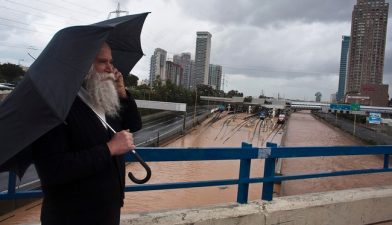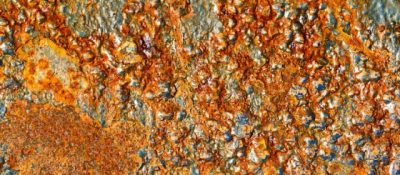 The United Arab Emirates (UAE) upped the wackiness factor of its portfolio of national mega-projects, announcing plans to build an artificial alp so the country can control its weather. Scientists will investigate if a man-made mountain will increase precipitation in cities like Dubai and Abu Dhabi in this nation where rain falls just five days per year. Is this really the best defense against looming drought?
The United Arab Emirates (UAE) upped the wackiness factor of its portfolio of national mega-projects, announcing plans to build an artificial alp so the country can control its weather. Scientists will investigate if a man-made mountain will increase precipitation in cities like Dubai and Abu Dhabi in this nation where rain falls just five days per year. Is this really the best defense against looming drought?
The UAE lives on desalinated seawater, energy-intensive and expensive to produce. The nation takes a schizophrenic approach towards water conservation. Unbridled development of water parks and glass-clad skyscrapers (requiring copious amounts of H2O to stay sand-free and sparkling) evaporates progress gained by modern building codes (which recommend high-efficiency plumbing).
The average Emirati uses about 550 liters of water daily compared to the international average of 170 to 300 daily liters, according to the Federal Water and Electricity Authority. Consider typical summer temperatures that hover at 113 ºF, and wonder why conservation is not in the cards.
Crafting a mountain from flat desert terrain is in keeping with the Arab nation’s development ambitions. It already boasts the Burj Khalifa, the world’s tallest building. It has artificial islands in the shape of palm trees and a miniature map of earth’s continents. There’s an indoor ski slope and a company that constructs home “snow rooms“. “Denile” is not just a river in Egypt; it’s the prevailing attitude towards climate change in the UAE.
The science behind the scheme is simple. The vertical slopes of a mountain force warm, moist air to rise, cool, and condense, in the process create clouds. More clouds give more opportunities for seeding, where frozen chemicals (such as potassium iodide) are dropped into the clouds to boost rainfall. The UAE National Center for Meteorology and Seismology (NCMS) stated that the nation spent $588,000 on cloud-seeding last year, with 186 flights spraying clouds to trigger precipitation. But results are unpredictable and can backfire, as happened in March, when nearly 30 cm of rain fell in less than a day.
The NCMS is collaborating with the U.S.-based University Corporation for Atmospheric Research (UCAR) on the first planning phase of the project, according to Arabian Business, backed by $400,000 in government funding.
“What we are looking at is basically evaluating the effects on weather through the type of mountain, how high it should be and how the slopes should be,” Roelof Bruintjes, an expert in weather modification programs at the National Centre for Atmospheric Research (NCR) told Arabian Business. “We will have a report of the first phase this summer.”
Other scientists are not optimistic. “I really doubt that it would work,” Raymond Pierrehumbert, a physics professor at the University of Oxford told Vocativ. “You’d need to build a long ridge, not just a cone, otherwise the air would just go around. Even if you could do that, mountains cause local enhanced rain on the upslope side, but not much persistent cloud downwind, and if you need cloud seeding to get even the upslope rain, it’s really unlikely to work as there is very little evidence that cloud seeding produces much rainfall.”
Pierrehumbert, a geophysicist who specializes in climate change, sees potential for positive science to emerge from the study, perhaps helping to explain why a hot, humid area bordered by the ocean receives so little rain. But he emphasized the larger forces at play, “The UAE is a desert because of the wind patterns arising from global atmospheric circulations, and any mountain they build is not going to alter those.”
There is no decision about best site to place the mountain, nor has its size been defined – which means costs cannot yet be estimated. Bruintjes admits the project will only go ahead if they can develop a proposal that isn’t too expensive for the government, which is feeling the pinch of reduced oil income.
Pierrehumbert believes the funding should go into another project, suggesting solar-powered desalination plants as a better option. But where’s the fun in that?



